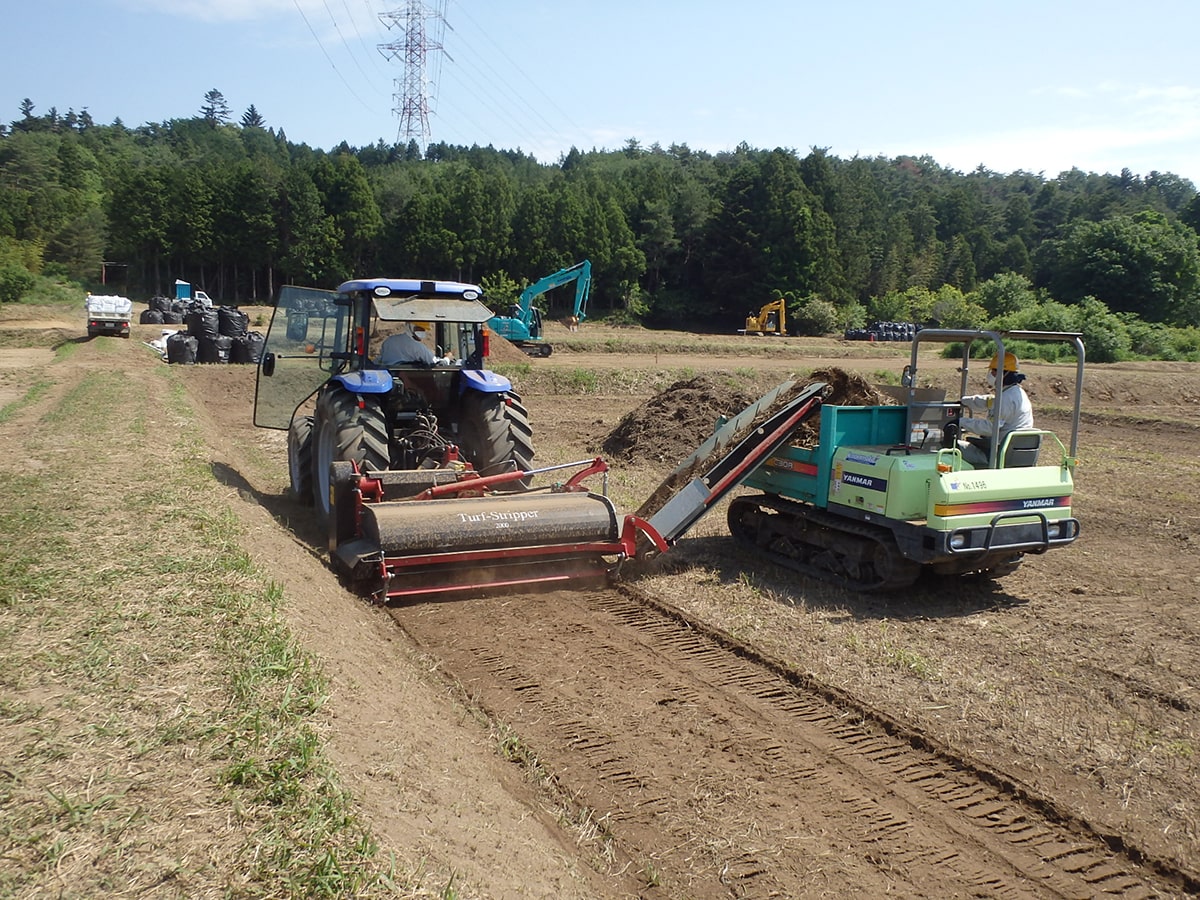Reference of the picture: Decontamination Archive Site
Hello, everyone. My name is Daichi, an expert providing the information on the radiation issues in an easy-to-understand manner.
This is the first article of the series of articles explaining the decontamination activities, I would like to respond to the following questions:
– What is the decontamination?
– What is the objective of the decontamination activities?
– What are the basic approach for specific methods of the decontamination activities?
Table of contents of this article
- (Let’s start from basic) What is decontamination?
- Specific methods of decontamination
- Remove
- Shield
- Keep away
- What is included as decontamination?
- Summary
I have been involved with the radiation-relevant issues, like the policy on the decontamination activities and the management of the Interim Storage Facility, after the accident of the Fukushima Daiichi Nuclear Power Plant in 2011.
I received a doctorate in the field of radiation, while working in Fukushima.
(Let’s start from basic) What is decontamination?
First let us start with the objective of decontamination works.
You might have an image of the works to clean up the contaminated places, like cleaning up your rooms, when hearing the word: ‘Decontamination’.
As mentioned later, it is also one of the important objectives (or measures) of the decontamination, but when taking account of the radioactive contamination, the most important objective is ‘to reduce exposure dose (especially external exposure dose) to people.
The measures to be taken, to achieve this objective, are explained below.
Specific methods of decontamination
More specific methods applied on-site will be explained in other articles as appropriate, but first the basic concepts to reduce the external exposure dose are explained in this article.
Remove

As the title represents, it means to remove radioactive materials and take away from the vicinity of the people affected by the radioactive materials.
This word ‘remove’ might correspond to the typical image of decontamination activities.
As specific measures against the environment contamination after the accident of the Fukushima Daiichi Nuclear Power Plant, the following measure can be taken as examples:
– Wiping off of roof and walls of residences, removal of topsoil on gardens
– Removal of topsoil on farmlands and parks
– Removal of leaves and branches on the surface of forest in the vicinity of people’s living area
Following points need to be noted regarding the removal of radioactive materials.
(Advantages)
– Radioactive materials are removed from the contaminated places. Therefore, the impact caused by radioactive materials are to some extent relaxed.
(Disadvantages)
– Removal of radioactive materials could also deprive of essential effect of land (e.g. Fertile topsoil of farmlands, Necessary function of topsoil to maintain forest ecosystem)
– Procedures become necessary to transport, store and dispose the waste generated through decontamination activities.
Shield

This means to put something between radioactive materials and person affected by radiation, to reduce the impact of radiation on the person.
The stuff to be put depends on the kinds of radiation, and the kinds of radiation and their characteristics are elaborated in this article, this article, this article and this article.
For example, an alpha particle, which has weak penetration power, can be shielded even by a piece of paper.
On the other hand, a gamma ray, which has strong penetration power, needs to be shielded by a plate made of lead or iron.
In other words, radiations need to be shielded by appropriate shields, according to the kinds, or amount of radiation.
As specific measures against the environment contamination after the accident of the Fukushima Daiichi Nuclear Power Plant, the following measure can be taken as examples:
– Reverse tillage (To mix surface soil with soil in deeper part of field, or to exchange them though plowing)
– Coverage of surface of slope
It is like relationship of two-sides of the same coin with the method ‘Remove’, but the following needs to be taken account of for these methods as examples:
(Advantages)
– Original functions will be maintained, because nothing will be removed from the site. (e.g. Fertile surface soil of farmland, function of forest to maintain its ecosystem)
– No processes are necessary such as transportation, management nor disposal of generated waste in other places.
(Disadvantages)
– Measures need to taken against the transfer of radioactive materials from soil into agricultural plants, because they still remain in the soil, although the influence deriving from radioactive materials are to some extent relaxed.
– Long-term management of objects, which cover the radioactive materials, will become necessary to prevent the runoff the radioactive materials.
Keep away

‘Keep away’ here means not to taka any actions on radioactive materials themselves, but instead the affected people make themselves away from the radioactive materials.
As specific measures against the environment contamination after the accident of the Fukushima Daiichi Nuclear Power Plant, the following measure can be taken as examples:
– Temporary evacuation
– Relocation
For this measure, but the following needs to be taken account of for these methods as examples:
(Advantages)
– The impact derived from radioactive materials get less, if people keep distance from the radioactive materials, therefore external exposure dose will be surely reduced.
– No transportation nor management of objectives generated is necessary, because no operation is implemented at the contaminated site.
(Disadvantages)
– More time could be necessary, compared with aforementioned measures: ‘Remove’ and ‘Shield’.
– Economical and social impact on people could be more serious, due to the temporary evacuation or relocation.
What is included as decontamination?
Then, amongst abovementioned three measures: ‘Remove’, ‘Shield’ and ‘Keep away’, which one of them are included as measures of decontamination?
For example, in the guideline (in Japanese) provided by the national government (Decontamination guideline), ‘Remove’ as well as ‘Shield’ are included as specific measures of decontamination.
On the other hand, ‘Keep away’ is not regarded as a measure of decontamination.
Taking account of the fact that not only ‘Remove’, which might easily come up our mind as a measure of decontamination, but also ‘Shield’ is regarded as a measure of decontamination, you could understand, that objective of decontamination is (not to clean up the environment), but to reduce the exposure dose (especially external exposure dose).
Considering abovementioned advantages and disadvantages, and according to the situation of actual site (i.e. air dose rate), also keeping the fundamental principles of radiation protection (please see here) in mind, appropriate measures are supposed to be chosen accordingly in each case.
Summary
After explaining that the objective of the decontamination activities is mainly to reduce the external exposure, the following three methods to reduce external exposure are elaborated.
– Remove
– Shield
– Keep away
It is also covered, that amongst them, not only
– Remove
but also,
– Shield
is also regarded as methods of decontamination.
In addition, the specific methodologies are supposed to be chosen, according to the actual situation of decontaminated site or other factors, in a case-by-case manner.
By the way, abovementioned contents are summarized in the following videos.
It would be appreciated to visit them at your convenience.
– Japanese version
– English version
You can read the same article in Japanese here.
Thank you very much for reading this article.
See you next time!



コメント